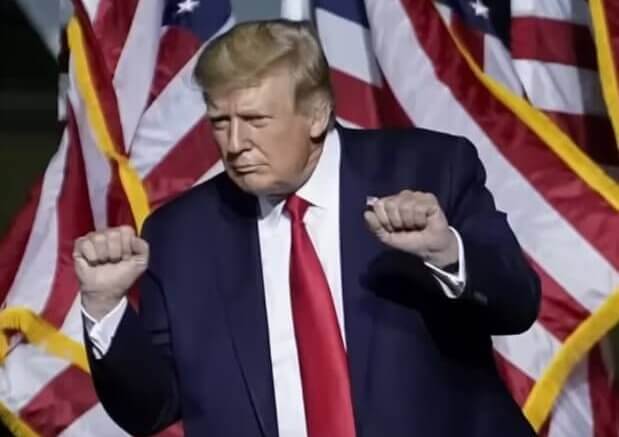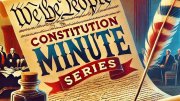Hanson correctly frames the past decade-plus as an era of radical transformation that sought to alter the very fabric of American governance. Under the Obama administration, and later in what Hanson calls Obama’s “third term” through Biden, the federal government expanded its reach into areas not envisioned by the Constitution:
-
Election laws were unilaterally changed, shifting from an Election Day process to a system dominated by early voting and mail-in ballots, fundamentally altering the mechanics of democratic participation.
-
The cultural and social order was upended, as the government actively promoted gender ideology, racial identity politics, and radical social policies.
-
Regulatory agencies operated without oversight, issuing rules and mandates that burdened businesses, restricted individual freedoms, and prioritized globalist interests over national sovereignty.
-
Attempts were made to pack the Supreme Court, eliminate the Senate filibuster, and bring in new states (Washington D.C. and Puerto Rico) to ensure permanent one-party rule.
These efforts mirror historical revolutionary movements, such as the French Revolution under the Jacobins, where institutions were overturned, history was rewritten, and ideological purity became the governing principle. Hanson’s comparison is apt—America experienced a cultural, economic, and political upheaval, one that sought to erase its foundational principles.
Trump’s counterrevolution, then, is a movement not of radical change, but of restoration—a return to constitutional fidelity and governance that serves the interests of the American people rather than entrenched bureaucracies or ideological elites.
Executive Action: The Constitutional Basis for Trump’s Counterrevolution
Recent executive actions from Trump’s administration reinforce the themes Hanson outlines. The February 18, 2025, presidential orders are grounded in constitutional authority and aim to restore the proper balance of power:
1. Restoring Presidential Authority Over the Executive Branch
-
Trump signed an Executive Order mandating that all executive agencies answer to the President, ensuring that independent agencies no longer function as unaccountable fiefdoms.
We would appreciate your donation. -
This is a direct response to the progressive expansion of federal agencies, which under Obama and Biden were able to impose regulatory burdens without oversight or democratic accountability.
-
The Office of Management and Budget (OMB) will now review all regulations, ensuring that no rogue agency circumvents the President’s authority.
Constitutional Basis: Article II of the U.S. Constitution vests all executive power in the President. For too long, this authority has been diluted by regulatory agencies that act independently of the executive. Trump’s order reasserts the unitary executive principle, a concept well-supported by constitutional scholars and the original intent of the Framers.
2. Radical Transparency on Government Spending
-
Trump’s administration has launched an aggressive transparency initiative that requires federal agencies to publicly disclose wasteful spending, canceled contracts, and terminated grants.
-
A review of Biden-era spending has already uncovered billions in politically motivated grants, including funding for climate justice initiatives, foreign LGBT activism, and bureaucratic inefficiencies.
-
The Trump administration has already recovered $1.9 billion in misplaced taxpayer funds, demonstrating a commitment to fiscal responsibility and accountability.
Constitutional Basis: The President is the chief steward of taxpayer funds. While Congress has the power of the purse, it is the executive’s duty to ensure efficient administration of federal expenditures. Trump’s initiative aligns with Article I, Section 9, which demands transparency in government spending.
3. Ending the Weaponization of Federal Agencies
-
During the Obama and Biden years, federal agencies were used as political tools, selectively enforcing laws based on ideological preferences.
-
Trump’s executive orders require uniform enforcement of federal law, ensuring that agencies like the Department of Justice and FBI serve all Americans, not just political elites.
-
Similarly, his administration has launched a crackdown on sanctuary cities and jurisdictions that defy federal immigration laws, reversing the neo-Confederate nullification policies of progressive states.
Constitutional Basis: The Supremacy Clause (Article VI) ensures that federal law is the law of the land. No state or locality has the constitutional authority to unilaterally nullify federal law—yet this is precisely what progressive strongholds have attempted to do with immigration and law enforcement.
A Return to Common Sense, Not Radicalism
As Hanson notes, Trump’s policies may seem radical to revolutionaries, but in reality, they are a return to common sense and normality. The hallmarks of his counterrevolution include:
-
Strengthening the military by reversing DEI-driven recruitment shortages and focusing on combat readiness.
-
Restoring traditional civic values by rejecting gender ideology in schools and sports.
-
Reasserting law and order by punishing criminals rather than coddling them.
-
Protecting election integrity by reinforcing ID requirements and restricting mass mail-in voting.
These actions are not an overhaul of the system, but rather a course correction—one that returns America to a constitutional framework that prioritizes limited government, individual liberties, and national sovereignty.
Conclusion: The Constitution as the Cornerstone
Hanson’s analysis, combined with Trump’s executive actions, presents a powerful case for a counterrevolution rooted in the Constitution. This is not about reshaping America into something new, but rather restoring the country to the principles it was founded upon:
-
Government accountability to the people
-
Presidential authority over the executive branch
-
Law and order, rather than ideological governance
-
Fiscal responsibility and transparency
Trump’s counterrevolution is not an attempt to seize power but to return power to where it rightfully belongs—with the American people. By reinforcing constitutional governance, his administration is ensuring that the radical transformation of recent years does not become the new normal.
In this fight, the Constitution is both the shield and the sword—a defense against radicalism and a tool for reclaiming America’s foundational principles. Hanson’s words should serve as a rallying cry for all who value the enduring wisdom of the Founders and the American Republic.




